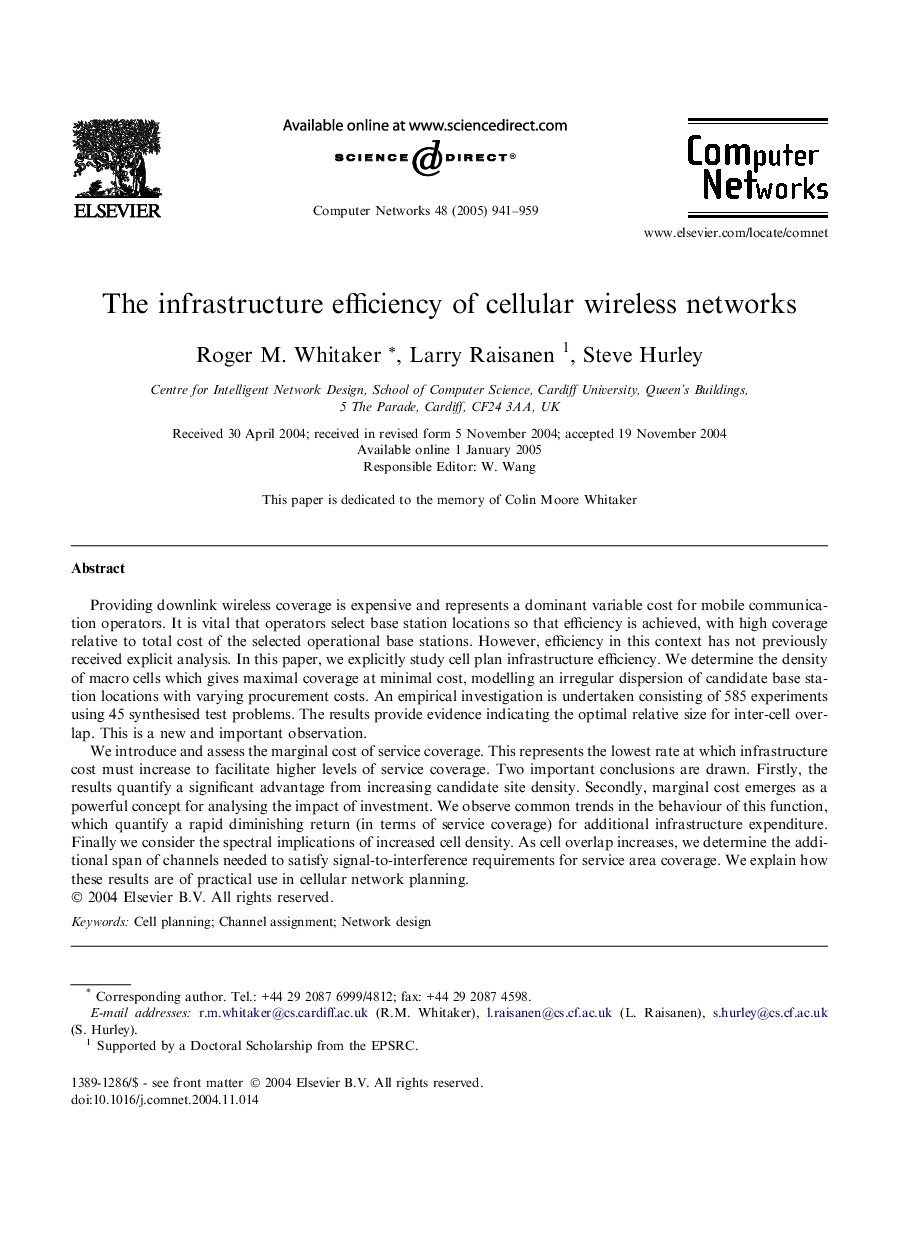| Article ID | Journal | Published Year | Pages | File Type |
|---|---|---|---|---|
| 10339576 | Computer Networks | 2005 | 19 Pages |
Abstract
We introduce and assess the marginal cost of service coverage. This represents the lowest rate at which infrastructure cost must increase to facilitate higher levels of service coverage. Two important conclusions are drawn. Firstly, the results quantify a significant advantage from increasing candidate site density. Secondly, marginal cost emerges as a powerful concept for analysing the impact of investment. We observe common trends in the behaviour of this function, which quantify a rapid diminishing return (in terms of service coverage) for additional infrastructure expenditure. Finally we consider the spectral implications of increased cell density. As cell overlap increases, we determine the additional span of channels needed to satisfy signal-to-interference requirements for service area coverage. We explain how these results are of practical use in cellular network planning.
Related Topics
Physical Sciences and Engineering
Computer Science
Computer Networks and Communications
Authors
Roger M. Whitaker, Larry Raisanen, Steve Hurley,
